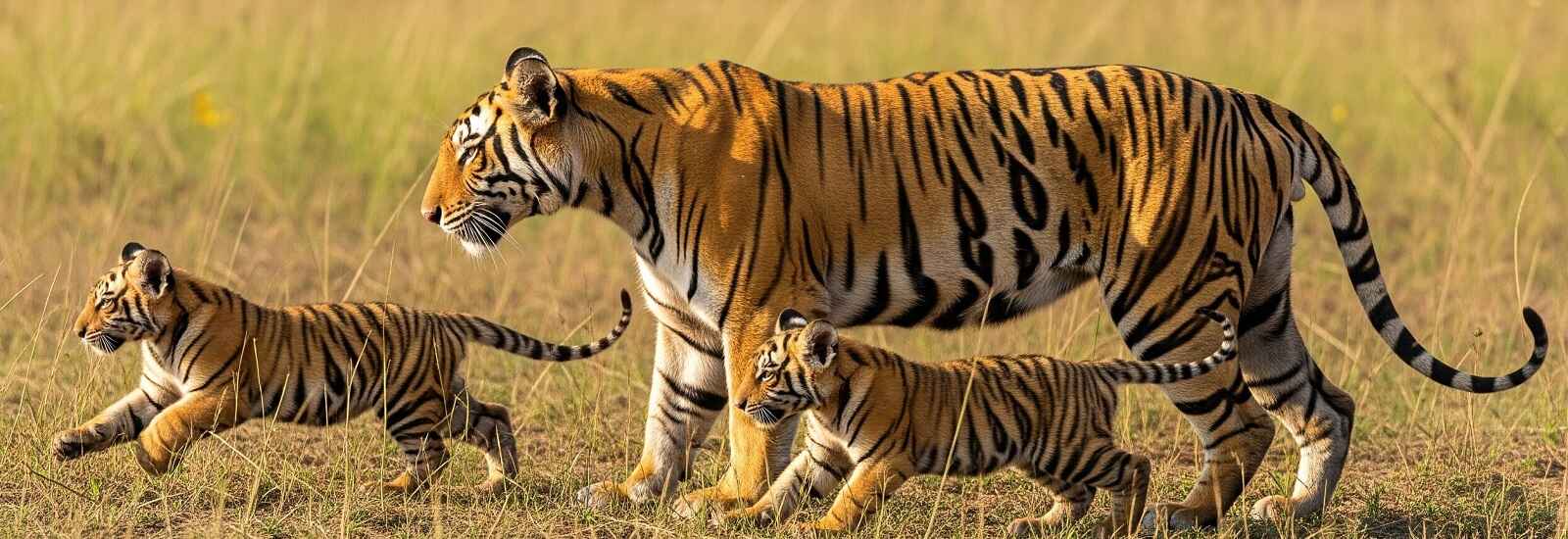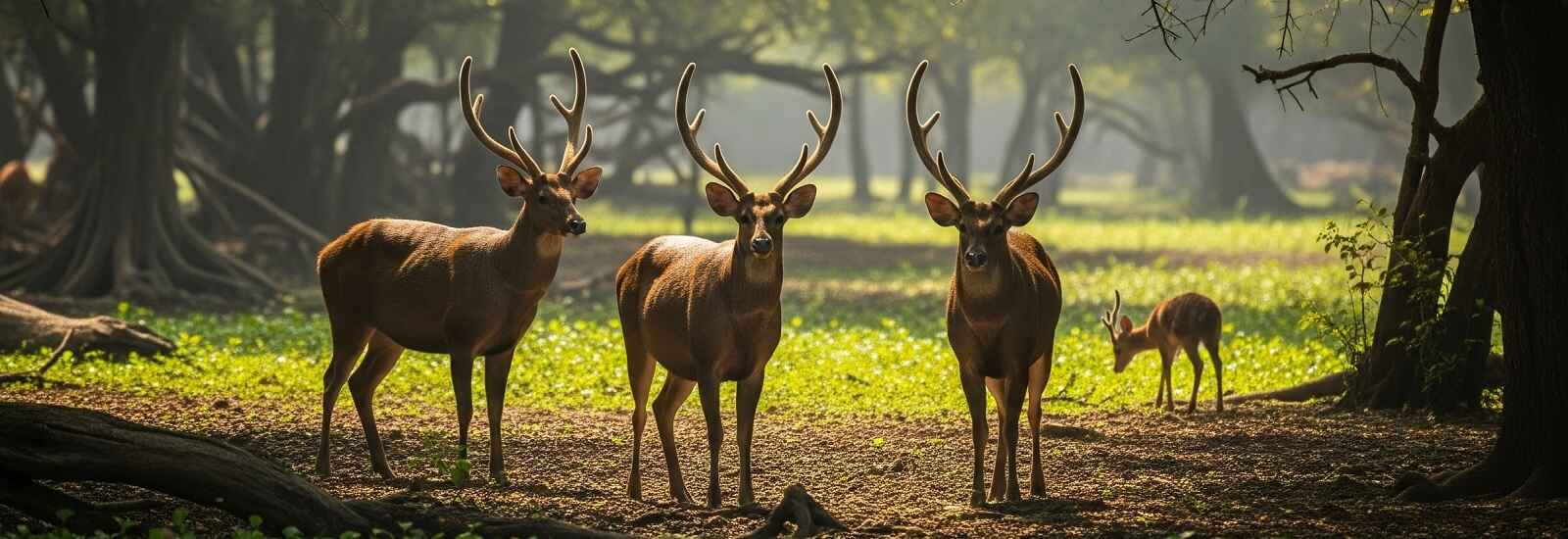 |
Wind Speed: 5.4 km/h
|
Humidity: 59%
|
AQI: PM2.5 - 73.75 &
PM10 - 74.65
|
Wind Speed: 5.4 km/h
|
Humidity: 59%
|
AQI: PM2.5 - 73.75 &
PM10 - 74.65 

Know About Pilibhit Tiger Reserve
About Pilibhit Tiger Reserve
Pilibhit Tiger Reserve (PTR) is a haven of wild nature, amazing biodiversity, and a success story of conservation in India. PTR is a spectacular patchwork of dense sal forests, tall grasslands, meandering river systems, and rich wetland ecosystems scattered in the Terai Arc Landscape of northern Uttar Pradesh. Covering an area of 730+ square kilometers, this is a vivacious terrain that houses the Royal Bengal Tiger, in a spectacular diversity of flora and fauna.
PTR is not just about wildlife viewing- it is a place that is a living, breathing example of how nature and human efforts can go hand-in-hand to protect one of the most endangered habitats in the subcontinent. Pilibhit with its distinct positioning at the Indo-Nepal border is also of prime ecological importance, being a transboundary tiger movement corridor and a bird migration route.
Tiger Reserve - History and Establishment
The story of Pilibhit Tiger Reserve started way back before it was notified as a tiger reserve. The forest formerly used to be the personal hunting ground of the royal families of Oudh and local rulers. It was conserved as a forest division during the British Raj over the decades and subsequently thereafter it was declared as a Reserved Forest under the Uttar Pradesh Forest Department.
The proposal to make the area a tiger reserve came to the fore in the early 2000s following the high tiger population and its significance as a part of the Terai Arc. Pilibhit Tiger Reserve was established in the year 2008 as the 45th tiger reserve in India under Project Tiger by the Government of India. It has since achieved massive success in terms of increasing the population of tigers and reversing the degraded habitats.
However, these are not the only achievements of PTR in the international arena: in 2020, the Global Tiger Forum recognized PTR with the "International Award for Tiger Conservation Excellence", and UNESCO included PTR in the World Network of Biosphere Reserves, which once again emphasizes its ecological significance at the global level.

Project Tiger & UNESCO Biosphere Reserve:
Project Tiger:
Being a part of the national Project Tiger program, Pilibhit Tiger Reserve is one of the key habitats ensuring the existence of Bengal tigers in the Indo-Gangetic plains. It acts as a critical genetic repository and breeding area for tigers and provides ease of passage for the tigers to and fro other reserves such as Dudhwa National Park, Kishanpur Wildlife Sanctuary, and Shuklaphanta National Park in Nepal.
The Reserve has registered one of the most rapidly increasing tiger populations in India with good male-to-female proportion, new cubs being born every year, and a prey base density that is on the rise. Such findings are a result of effective patrolling, habitat management, and community participation.
UNESCO Biosphere Reserve:
Pilibhit Tiger Reserve became a UNESCO Biosphere Reserve in 2020, becoming a part of an exclusive club of natural heritage destinations worldwide. The recognition refers to its unique ecological significance and its contribution to the balanced conservation of biodiversity and sustainable human development.
The biosphere of PTR includes core, buffer, and transition zones where conservation, tourism, agriculture, and community development overlap, and thus it is a paradigm of integrated ecosystem management.
Geography and Habitat:
PTR is situated in the foothills of the Himalayas in the Pilibhit, LakhimpurKheri, and Shahjahanpur districts of Uttar Pradesh, and is bounded on the north by Nepal and on the east by the Sharda River. What is really special about it is its geographical diversity. The reserve is situated in the Terai ecosystem and is typified by:-
Moist Sal Forests - These forests are dominated by Shorearobusta and they make good tiger habitats.
Tall Grasslands - Suitable habitat for prey animals such as barasingha and spotted deer and also provides shelter to big cats.
Wetlands and River Systems - These comprise the ShardaSagar Dam, Siphon Canal, and the sacred SaptSarovar area that sustains fish, reptiles, and hundreds of migratory birds.
Chuka Beach - This is a common eco-tourism attraction situated at the Sharda Dam, which is beautiful and also provides special wildlife viewing opportunities.
The altitude of the reserve is between 150-200 meters above sea level and it receives a reasonable amount of rainfall making it fertile and rich in water, hence accommodating a high diversity of species.
Tiger & Wildlife Conservation Efforts:
It is not merely the conservation of the tiger in Pilibhit, but the conservation of an entire ecosystem. The Forest Department together with the local people and international bodies has established various measures for preserving wildlife.

Major Conservation Projects:
Anti-Poaching Patrolling - The 24/7 monitoring is provided by the field personnel carrying GPS, camera trap, and wireless equipment.
Habitat Enhancement - The development of grasslands, the creation of waterholes, and fire line maintenance ensure the continuation of the ecosystem.
Wildlife Corridors - Ensuring the existence of natural pathways that allow tigers to cross state and international borders safely.
Human-Wildlife Conflict Mitigation - Compensation programs and fencing of crops lower the tempers between the people and the animals.
Community Involvement - The eco-development committees and eco-tourism enterprises such as Chuka Eco-Tourism Site economically and emotionally empower the local villagers and thereby they become stakeholders in conservation.
Success Story of Pilibhit Tiger Reserve:
However, over the last ten years, Pilibhit Tiger Reserve has turned out to be among the few reserves where the tiger population is increasing steadily. There were slightly more than a dozen tigers in 2008, but these days, the reserve boasts over 90 plus tigers, which makes it one of the most successful tiger rewilding initiatives in India.
Pilibhit Tiger Reserve is not just a place, it is a conservation success story, a biodiversity hotspot, and a sign of what nature and man can accomplish together. Be there an animal-lover, eco-tourist, conservationist, or a simple traveler; Pilibhit will leave you with an experience of a lifetime that will move your heart and leave you awed. Indeed, come and meet the wild. Come, join the wild.





 How To Reach At PTR
How To Reach At PTR
